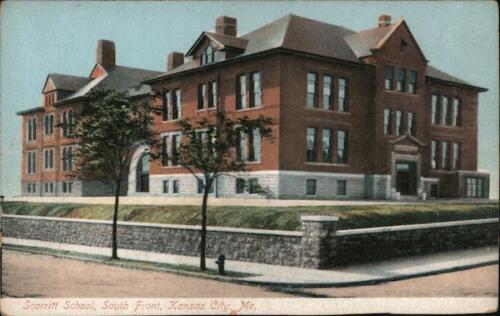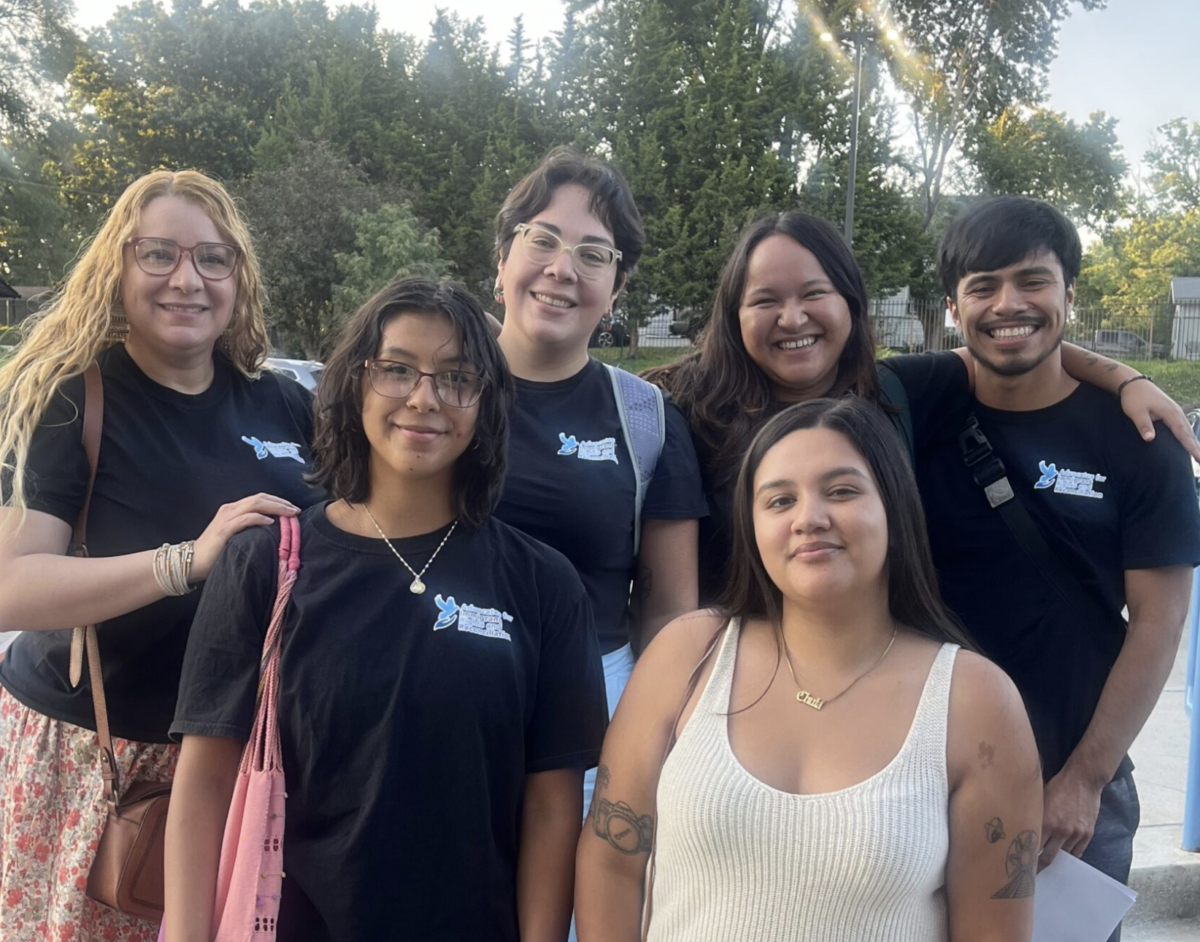
Michael Bushnell
Publisher
The Scarritt Renaissance Neighborhood Association met Thursday evening to discuss two new development proposals for the currently vacant Scarritt School site located at Lexington and Bales Avenues in the heart of the neighborhood.
The school was mothballed by the Kansas City Public School (KCPS) district following the 2010 school year and has sat vacant since, becoming a frequent target for crime and vandals. Early in 2022, the district officially declared the school site surplus. That designation started the process for adaptive reuse proposals from private developers. Last June, the district hosted a walk-through and on-site discussion of possible reuses for the more than 50,000-square-foot building and the surrounding grounds.
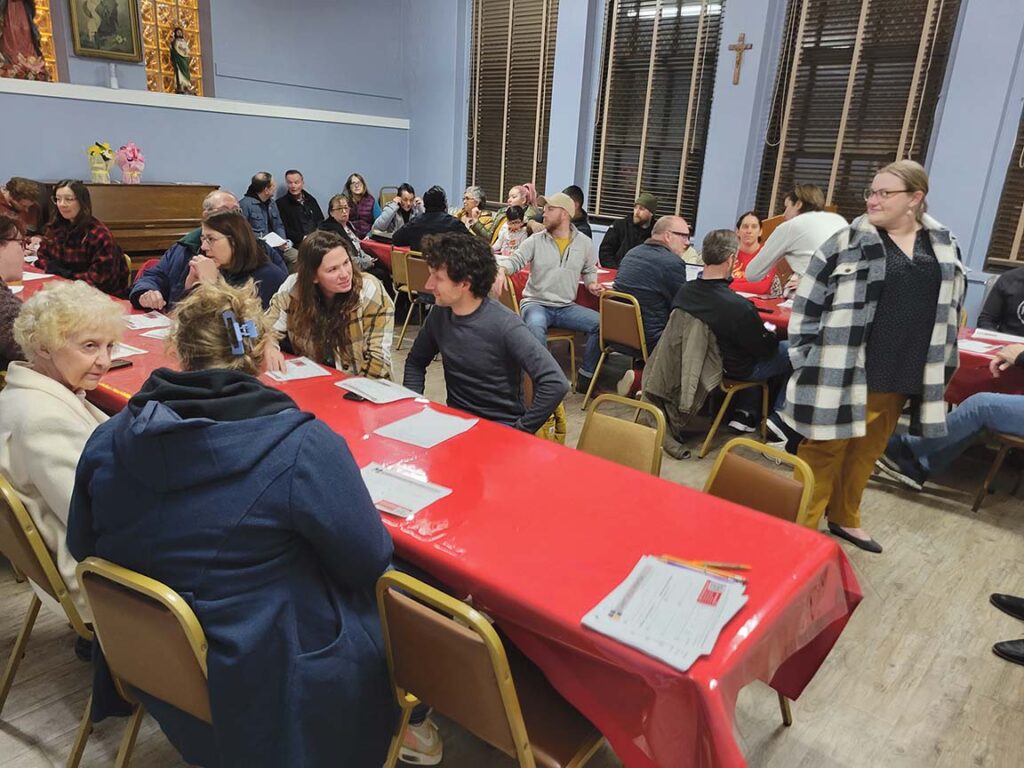
On Thursday, Shannon Jaax and Jesse Lange, consultants for Kansas City Public School District, announced that two proposals chosen by the district’s repurposing department would be presented, one from Laura McGrew, Principal at 405 Development, that would transform the school site into a creative space for artists. The other proposal, from Exact Architects, would combine community space with affordable and market rate housing.
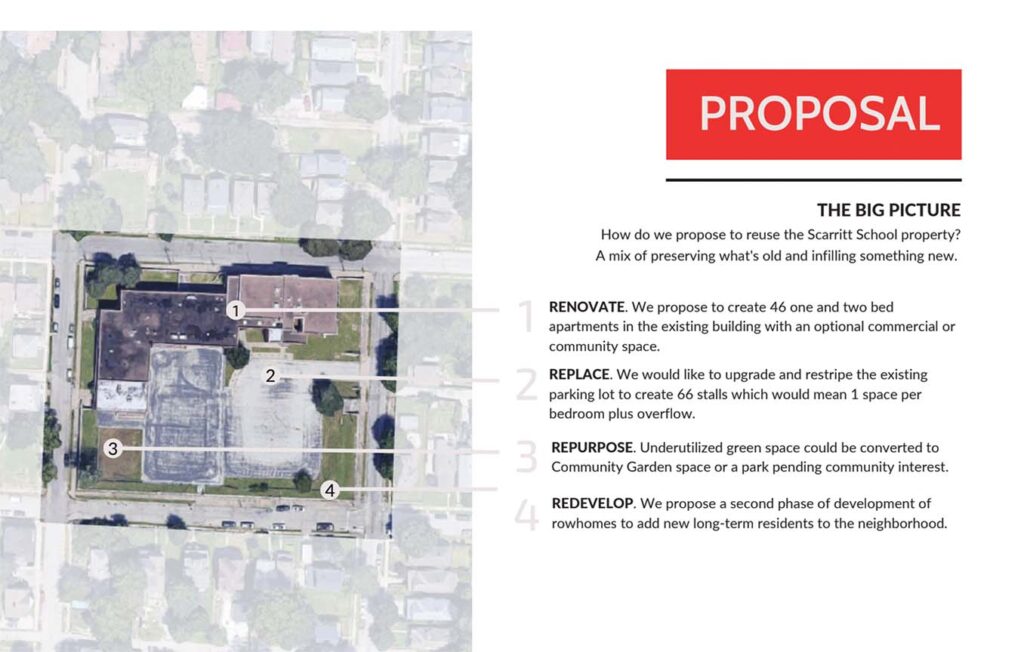
Caleb Buland, Managing Partner at Exact Architects, presented a redevelopment proposal that relies on a more traditional, adaptive reuse program for schools by creating housing in the old school space. Buland proposed “high quality, for-rent lofts” at the site that would be good for seniors aging in place, and would also be pet and family friendly. Buland pointed to other projects his firm has completed in Kansas City such as the Wonder Shops and Flats, the Acme building in Martini Corner and The Netherland Hotel, all of which utilized both New Market Tax Credits and Historic Tax Credits through the State Historic Preservation Office.
Buland noted that 40% of the units would be designated as low-income housing, targeting people who are 60-80% of AMI (Area Median Income) by working with the LCRA (Land Clearance for Redevelopment Authority) on a 10-year tax abatement for the project. When pressed on the rent amount, Bulen stated that the project would have some units “well under $1,000.”
The total number of units for the project would be between 38-50 units, depending on how many studio apartments are in the mix. In addition, the proposal called for a large pet park on the site, green space, off-street parking and an area set aside for a community garden. Buland’s proposal also calls for community space inside the building, along with commercial spaces.
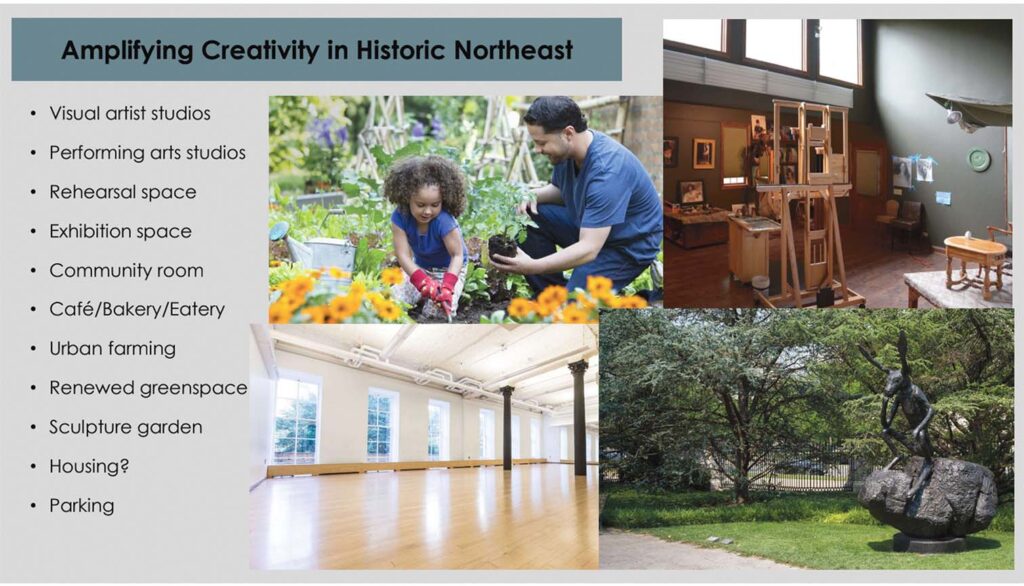
McGrew’s, 405 Development plan would transform the old school into a creative place with the intention of making room for artists, especially studio space, and spurring economic growth and social change through creative place-making. The more specific vision would be to partner with a local organization that would offer on-site building and program management.
“This is a passion project for me,” McGrew said. “This is my first project and I created 405 Development specifically to work on turning Scarritt Elementary into a creative place for local artists.”
The 405 Development proposal calls for retaining as much of the original school as possible, including the tiled walls, and refurbishing the display cabinets that are built into the classrooms. McGrew said that 21 spaces, mostly classroom space, would be converted into studio space that would rent for $9-$12 per square foot. McGrew noted the lack of affordable studio space in Kansas City, adding that dancers are paying $85 per hour for studio space in Kansas City, while the same space in San Francisco goes for roughly $15-$40 an hour.
The theater would be reworked to do double duty as both rehearsal and performance space by removing some of the seating and moving it to the stage. Two community rooms would be on the main level, as well, both with separate entrances from the outside.
McGrew’s proposal carries a $10.5 million price tag and relies on $7.5 million of that to be raised by investors in order to qualify for roughly $3.5 million in New Market Tax Credits. Additionally, McGrew said that Historic Tax Credits would be needed in order for her project to be viable. On-site housing would not be a Phase I component of her plan, but would be added at a later date after the opening of the arts center.
McGrew said that she was still looking for a financial partner for the initial capital outlay, as well as a partner to manage the center.
Both development proposals hinge on the issuance of both New Market Tax Credits and Historic Tax credits to make the projects viable, adding roughly six months to an already long timeline until ground is broken on the project.
Amanda Kranz, incoming President of the Scarritt Renaissance Neighborhood Association, expressed optimism about the future of the iconic neighborhood school building.
“It was interesting to hear the proposals Thursday evening,” Kranz said. “It left us a lot to think about and discuss. Our highest hope is that the redevelopment will have a sustainable economic model so that it can truly be an asset for our community in years to come.”
Zac Laman, who lives about a block away from the school, is ecstatic about the increased attention and activity.
“I’m just glad something, anything, is being done with it,” said Laman, a local artist and longtime resident. “I’m amazed it hasn’t been burned to the ground yet. That building has so much potential to be a light, as opposed to an eyesore. I really hope that it is realized.”
Both proposals will be posted to the school district’s website with a link to a public survey.
The surveys are available here in English and in Spanish.
Once the district takes in enough community feedback and a development proposal is agreed upon, the property will go under contract. Then the Board will notify the community of who they select as the development partner. After that, the neighborhood, the District and the developer will come together to craft a Community Benefit Agreement.
Groundbreaking for either of the proposals would be at least 20 to 26 months down the road. More information on the process and the plans can be found at https://www.kcpublicschools.org/about/repurposing.


